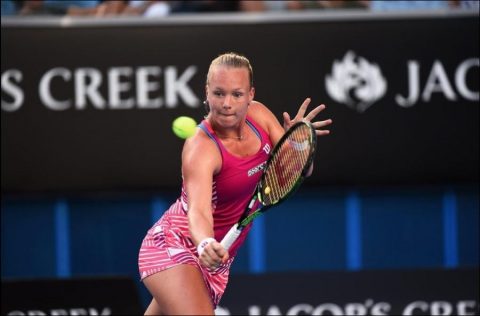The mechanics of the volley are identical on the forehand and on the backhand, with only the feet reversed.
1. The grip is the number 3 grip, the service or Continental as shown here,
2. The footwork is the same as for a ground stroke if there is time to accomplish the movement. The foot away from the ball steps directly across toward the opposite sideline, thus turning the body sideways to the net and the rear end away from the ball.
In many cases a shot is coming directly at the volleyer, and in this case, step directly backward with the foot closest to the ball on the side you wish to play it. Swing that foot back and behind you toward the opposite sideline. This will produce the same result as above. Many times a shot comes so suddenly at a volleyer that there is no time to change the feet. If that happens, throw your weight on the foot closest to the ball, and lean forward.
3. Lift the racquet head above the wrist with a very short backswing. Move the racquet head forward into the line of flight of the oncoming ball, and meet it flat with a stiff wrist about six to ten inches closer to the net than the foremost line of your body. Block the ball directly to where you want it to go, and above all, do not follow through. The volley should gain its power from the opponent’s shot, plus the solidity of your block and stiff wrist. This is for the ordinary volley. Later, I will mention an exception in the short drop volley.
4. The lower the shot you must volley, the more you must bend your knees, since on all volleys the racquet head should be above the wrist to the moment of meeting the ball. Do not attempt to hit through or drive any volley below the level of the head. Be content to let your racquet face make the angle, and gain the power from your opponent’s shot. Volleys win by direction, placement, far more than they do by speed.
